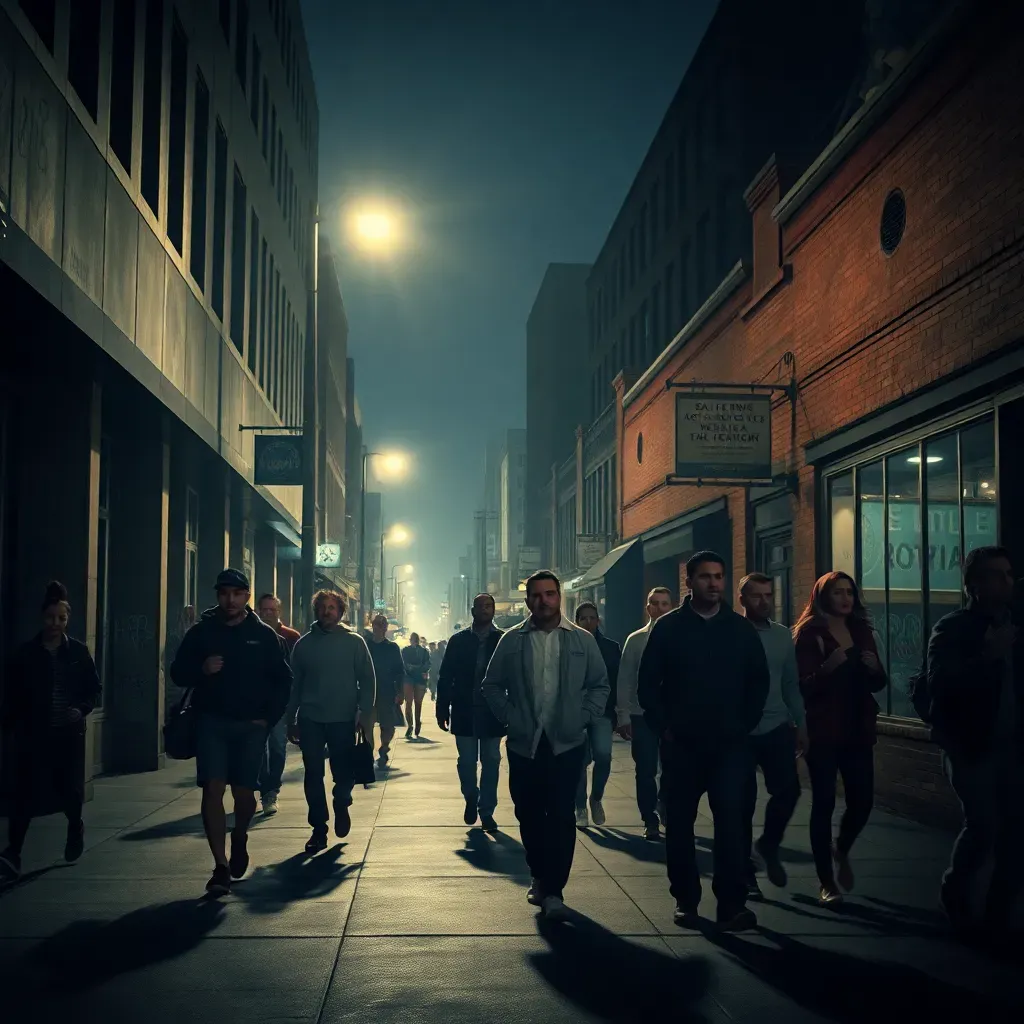Is Little Rock Dangerous? Shocking Crime Truths You Won’t Believe
- How Dangerous Is Little Rock? Breaking Down The Crime Stats
- The Most Dangerous Neighborhoods in Little Rock: Where to Watch Out
- Why Does Little Rock Get a Bad Rap? Separating Fact from Fiction
- How Little Rock’s Police and Community Are Fighting Crime
- What Locals Say: Real Opinions on Safety in Little Rock
- Tips for Staying Safe in Little Rock: What You Need to Know
- Comparing Little Rock to Other Risky Towns in the US: Where Does It Stand?
- What’s Next for Little Rock? Trends, Improvements, and What to Watch
- Sources and Further Reading
How Dangerous Is Little Rock? Breaking Down The Crime Stats
Crime stats can sound like a jumble of numbers, but they tell us important stories about a city's safety. When we talk about violent crime, we mean offenses like assault, robbery, or worse — things that directly threaten people's well-being. Property crime covers theft, burglary, or vandalism — crimes that affect belongings and homes. Incident reports are the official records police keep when something happens.
In Little Rock, the main source for crime data is the Little Rock Police Department’s (LRPD) COMPSTAT system. COMPSTAT stands for Comparative Statistics, and it’s a way police track crime trends weekly, comparing current numbers to previous years. The FBI and Arkansas state police also publish reports that help paint a bigger picture.
Let’s look at some recent numbers. According to LRPD data for 2024, the city saw about 1,200 violent crimes and 4,500 property crimes reported. To put that in perspective, the national average for violent crime in US cities is roughly 380 incidents per 100,000 people, while Little Rock’s rate is closer to 600 per 100,000. That’s higher than average but not the highest you’ll find in the country.
| Crime Type | Little Rock Rate (per 100k) | National Average (per 100k) | Trend (Last 5 Years) |
|---|---|---|---|
| Violent Crime | 600 | 380 | Stable with slight increase |
| Property Crime | 2,200 | 2,100 | Decreasing slowly |
What does this mean for everyday life? While the numbers show Little Rock has more crime than many cities, it’s not a free-for-all. Many neighborhoods are calm and safe, and crime tends to cluster in specific areas. The city’s police keep a close eye on trends, and community programs work to improve safety.
To clarify some terms:
- Violent crime Crimes involving force or threat, like assault or robbery.
- Property crime Crimes targeting possessions, like burglary or theft.
- Incident reports Official police records of reported crimes or suspicious activities.
Understanding these helps you read crime stats without panic — it’s about knowing where to be cautious, not fearing the whole city.
The Most Dangerous Neighborhoods in Little Rock: Where to Watch Out
Like many cities, Little Rock has neighborhoods with different safety levels. Some areas are known for higher crime rates, while others enjoy strong community ties and police presence.
Areas around West 25th Street and parts of downtown have seen more risky incidents, including occasional violent crimes and property offenses. Residents often mention streets with poor lighting or less frequent police patrols as places to be cautious, especially after dark.
On the flip side, neighborhoods like Hillcrest and Chenal Valley are generally considered safer, with active neighborhood watches and community programs. These areas benefit from better lighting, more foot traffic, and regular police engagement.
Here’s a quick checklist to spot safer vs. sketchy neighborhoods:
| Safer Neighborhoods | Neighborhoods to Be Cautious In |
|---|---|
| Good street lighting | Poorly lit streets and alleys |
| Active community watch groups | Less community involvement |
| Regular police patrols | Lower police presence at night |
| Low incident reports | Higher frequency of reported incidents |
Comparing to other dangerous neighborhoods in the US, Little Rock’s hotspots are similar in that crime tends to cluster in specific areas rather than being citywide. This is common in many urban centers.
Why Does Little Rock Get a Bad Rap? Separating Fact from Fiction
If you ask around or browse online, you’ll find plenty of chatter about Little Rock being a rough or shady place. Movies and TV series sometimes paint it as a wild city full of trouble, which adds to the reputation.
But how much of that is true? Media often focuses on dramatic stories, which can skew perception. Local voices tell a more nuanced tale. Many residents acknowledge there are areas to avoid at night but also emphasize the city’s friendly neighborhoods and growing safety efforts.
On forums like Reddit, questions like “Is Little Rock a sketchy city?” pop up regularly. Responses vary — some users share personal experiences of feeling safe, while others warn about dicey spots. This mix shows that perception depends a lot on where you go and when.
The difference between perception and reality matters because it shapes how people feel about visiting or moving. Understanding the facts helps cut through stereotypes and make informed decisions.
How Little Rock’s Police and Community Are Fighting Crime
The LRPD is active in crime prevention. Programs like the Citizen Police Academy invite residents to learn about policing firsthand, building trust. The Crime Free Multi-Housing Program works with landlords to keep rental properties safer. Youth camps aim to engage young people positively, steering them away from trouble.
COMPSTAT meetings happen weekly, where police analyze crime data and adjust patrols or strategies accordingly. This data-driven approach helps target problem areas efficiently.
There have been successes: some neighborhoods report fewer incidents year over year thanks to these efforts. But challenges remain, especially with gang activity and violent crime in certain parts of the city.
Residents can stay involved by joining neighborhood watches, attending community meetings, or using local apps and alerts to stay informed.
What Locals Say: Real Opinions on Safety in Little Rock
Here’s what some locals and visitors have shared online:
“I’ve lived here for 10 years and mostly feel safe, but I avoid certain streets after dark. The police have been pretty responsive when I called.” — Reddit user source
“Some parts of Little Rock can be dodgy, but there are great neighborhoods too. It’s about knowing your area.” — Local news interview, source
“As a visitor, I used crime maps to pick a hotel in a safer zone. It helped me avoid iffy areas.” — Twitter user, source
These voices highlight a mix of caution and confidence, showing that personal experience and awareness shape how safe people feel.
Crime Rates Comparison: Little Rock vs. National Average & Other US Cities
Little Rock Crime Rates (per 100k)
600
2200
National Average Crime Rates (per 100k)
380
2100
Other Risky US Cities (per 100k)
Violent: 1200
Property: 3000
Violent: 1800
Property: 3500
Violent: 1100
Property: 2900
What This Means
Little Rock’s violent crime rate is about 60% higher than the national average, while property crime is just a bit above average. Compared to other cities known for high crime, Little Rock’s numbers are lower but still notable. Crime tends to be concentrated in certain neighborhoods, and the city is actively working on improvements like better lighting and community programs. So, while it’s not the safest city out there, many areas are chill and safe if you know where to go.
Tips for Staying Safe in Little Rock: What You Need to Know
If you’re heading to Little Rock, here are some practical tips:
- Avoid poorly lit streets and alleys, especially at night.
- Stick to neighborhoods known for active community watch programs.
- Use official crime maps and police reports to check areas before visiting or moving.
- When traveling with kids, choose accommodations in safer parts of the city or nearby towns.
- Stay alert on public transport and avoid isolated stops after dark.
- Report suspicious activity to police promptly.
Knowing these simple steps can make a big difference in your experience.
Comparing Little Rock to Other Risky Towns in the US: Where Does It Stand?
Here’s a quick comparison of Little Rock with other cities often labeled sketchy or risky:
| City | Violent Crime Rate (per 100k) | Property Crime Rate (per 100k) | Notes |
|---|---|---|---|
| Little Rock, AR | 600 | 2,200 | Higher than average, with focused hotspots |
| Birmingham, AL | 1,200 | 3,000 | One of the highest violent crime rates nationally |
| Detroit, MI | 1,800 | 3,500 | Long-standing challenges with violent crime |
| Memphis, TN | 1,100 | 2,900 | High crime but active community programs |
Cities earn labels like dodgy places in the US due to concentrated crime and economic challenges. Little Rock shares some traits but also benefits from ongoing improvements and community engagement.
What’s Next for Little Rock? Trends, Improvements, and What to Watch
Recent trends show a slight uptick in violent crime but a slow decrease in property crime. Experts suggest that continued focus on community policing and youth programs could help turn the tide.
New initiatives aim to improve street lighting and expand neighborhood watches. Police are also exploring technology to better track gang activity.
Staying updated with official crime stats and local news is key. The city’s potential to improve safety is real, but it requires ongoing effort from police, residents, and leaders.

Sources and Further Reading
- KARK News: Little Rock Crime Rankings
- Reddit: Safe Town/City Discussion
- Little Rock Open Data: Violent Crime Stats
- KARK Crime Analysis
- CrimeGrade: Safest Places in Little Rock
- City of Little Rock Police Crime Stats
- Levar Law: Violent Neighborhoods in Little Rock
- Lemley Law: Arkansas Crime Rates by City
What do you think about the safety situation in Little Rock? Have you had experiences in sketchy or safe neighborhoods? How would you like to see the city improve its crime prevention efforts? Share your thoughts, questions, or stories in the comments below!
 Crime rate in Little Rock 2025: shocking trends you won’t believe
Crime rate in Little Rock 2025: shocking trends you won’t believe Most dangerous neighborhoods in Little Rock you won’t believe exist
Most dangerous neighborhoods in Little Rock you won’t believe existSi quieres conocer otros artículos parecidos a Is Little Rock Dangerous? Shocking Crime Truths You Won’t Believe puedes visitar la categoría Arkansas.

Leave a Reply